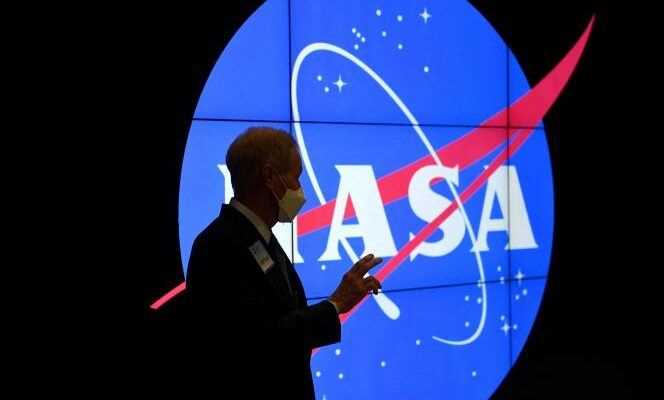The Moon will wait a little longer. The return of astronauts to lunar soil, as part of the American Artemis program, has been delayed from 2024 to 2025 ” as soon as possible “, announced Tuesday, November 9, NASA.
The date of 2024 had been set by Donald Trump’s administration but it was widely considered to be almost impossible to meet. This delay was therefore relatively expected, but this is the first time that NASA has officially recognized it. The American space agency was waiting in particular for the resolution of a legal dispute concerning the development of the future lander before announcing a new schedule.
“We lost nearly seven months in litigation, and that probably pushed back the first human landing until 2025 at the earliest”, his boss Bill Nelson said at a press conference.
Corn “There are other reasons”, he added. The 2024 date set by the previous administration was not “Technically feasible”, he asserted. He also criticized the lack of funds allocated by Congress in recent years for the development of the moon lander. This mission, which is to take the first woman to lunar soil, is named Artemis 3.
The test mission without an astronaut scheduled for February 2022
Bill Nelson also announced that the Artemis 2 mission, which will be the first in the program with astronauts on board but which will not land on the Moon, now had “A potential take-off date in May 2024”. This second mission, which was previously announced for 2023, “Will go further than any human has ever been. Probably nearly 65,000 km beyond the Moon, then will come back to Earth ”, said the boss of NASA.
Artemis 1, the first test mission to the Moon which will not include an astronaut on board, is for its part still scheduled for February 2022, as recently announced.
All of these missions will use NASA’s new giant rocket, called SLS, which will propel the Orion capsule to the moon. It is currently fully assembled at the Kennedy Space Center in Florida, awaiting take-off.
The cost of developing the capsule, in which the astronauts will be located, has been increased from $ 6.7 billion to $ 9.3 billion (around € 8 billion) until Artemis 2, Nelson said. Tuesday. But the astronauts will then have to be transferred aboard a moon lander in order to land on and leave the moon.
The last human presence on the moon dates from 1972
The construction of this lander has been entrusted to SpaceX. Named Starship, it is currently under development in Texas. Work between NASA and SpaceX on this machine had to be interrupted after Blue Origin, which was also in the running for the award of this flagship contract, lodged a complaint against the choice of the space agency, arguing that the process of selection had been unfair. This complaint was dismissed last week by a federal court.
“Even though we were on a break, the SpaceX teams were able to move forward”, said Kathy Lueders, associate administrator of NASA. Discussions resumed with Elon Musk’s company “To fully understand the progress made”, she added.
SpaceX must successfully land without an astronaut on board on the Moon, a demonstration being part of NASA’s requirements for this contract. The date of this test is not known, but it will take place “At some point before humans land”, said Bill Nelson.
The Artemis program, which is also to take the first colored person to the moon, echoes NASA’s Apollo program in the 1960s, but is intended to establish a lasting presence on the moon and prepare for journeys to Mars.
The first humans to set foot on the moon were part of the Apollo 11 mission, in 1969, and the last time humans were there was in 1972, with Apollo 17.
“The Moon, an Adventure”, a series in six episodes
